Blog, Industry News, trenchless people, trenchless products
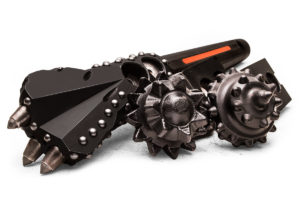 Hutchinson, Kansas – StraightLine HDD, Inc. announced the acquisition of Texas-based Armadrillco, Inc. The strategic acquisition of complementary products expands the portfolio of high-flow/side-load transmitter housings and rock tools targeting hard formation pilot drilling. The combination also solidifies StraightLine’s strategic position within key HDD markets. The change in ownership was completed in February.
Hutchinson, Kansas – StraightLine HDD, Inc. announced the acquisition of Texas-based Armadrillco, Inc. The strategic acquisition of complementary products expands the portfolio of high-flow/side-load transmitter housings and rock tools targeting hard formation pilot drilling. The combination also solidifies StraightLine’s strategic position within key HDD markets. The change in ownership was completed in February.
“This acquisition is an excellent strategic fit for our tooling business,” said StraightLine HDD president, Joe Phillips. “Both companys’ products are known for industry-leading performance and service life. Augmenting the StraightLine tool portfolio with
Armadrillco demonstrates our commitment to expand our position as a world-class
supplier of Ready-To-Work HDD solutions.”
The addition of Armadrillco products represents a significant move to broaden the
company’s portfolio of box x box/high-flow/ side-load transmitter housings, drill
heads and rock tools. “Expanding our product portfolio with innovative and patented
technologies is a fundamental piece of our growth strategy,” says Jay Cary, Vice-
President of Sales. “Product expansion, coupled with StraightLine’s established sales
and manufacturing efficiencies, will extend market reach of Armadrillco products.”
Initially, the product offering include several box x box/high-flow/ side-load and
slant-face transmitter housings, along with a variety of dirt and rock bits. Phillips says
plans are underway to expand the product offering over the next 12 months, beginning
with a number of new side-load housings in 2017.
The combination retains Armadrillco founder, Chuck Webb, as Territory Manager.
Webb, a HDD veteran as a driller and tooling designer adds decades of field
experience to the StraightLine HDD team.
About StraightLine HDD, Inc.
Since 1984, StraightLine has produced “Professional Drilling Solutions” to the trenchless industry. It’s full line of down-hole tools, wear parts and accessories are known for their innovative and rugged design. In 2015, Straight-Line HDD merged operations with Source: HDD, Inc., a leading provider of used HDD rigs and support equipment. Together, the merger created a company offering total Ready-To-Work HDD solutions—from rig to bit. Call 620-802-0200 or visit us at www.straightlinehdd.com for details.
Blog, Industry News, trenchless projects
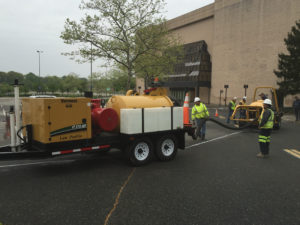
OKAHUMPKA, Fla., February 24th, 2016 – Micro Trenching is one of the installation methods being utilized by contractors to bring fiber networks to consumers. Micro Trenching is an installation method in which a narrow and relatively shallow trench is cut, usually on an asphalt roadway. Trench dimensions can range from .75 to 2.24 inches wide and 8 to 16 inches deep. While cutting, a vacuum system connected to the cutter wheel cleanly diverts and transports debris away from the worksite. Once the conduit is laid, the trench is backfilled with a grout compound.
Advantages of Micro Trenching include minimal cutting width that boosts installation production, reduce costs of backfill, shallow depth placement which helps avoid encounters with existing utilities and jobsite cleanliness thanks to the vacuum spoil that removes debris.
Vac-Tron Equipment has gone one step further in the cleanup process by developing a solution to micro trenching using a specialized in-tank filter (patent pending) inside the vacuum excavation unit’s debris tank. In most cases, the in-tank filter eliminates the need to add water to the micro trenching process and eliminates excessive material from reaching the cyclone separator. By using this filter, it will reduce the cleanup time during the trench run because there will be no need to stop and cleanout the cyclone or unclog the exit hose from debris tank due to caked material. Ultimately this will increase overall efficiency onsite.
David Donohue of Vermeer Mid Atlantic says “The Vac-Tron LP 573 SGT is the ideal vacuum for micro trenching, the high cfm’s and low noise output made communication and productivity simple.” David and Pfeiffer Enterprise Inc were demonstrating Vermeer’s micro trenching equipment and Vac-Tron’s LP SGT high cfm unit in Glen Bernie, MD in this photo.
For more info visit www.vactron.com or call Vac-Tron at 1-352-728-2222.
Blog, Industry News, trenchless people
 No-Dig Down Under is back in 2017! Join us on the Gold Coast from the 12-15 of September for four days of technical programs and networking with trenchless professionals, educators and experts.
No-Dig Down Under is back in 2017! Join us on the Gold Coast from the 12-15 of September for four days of technical programs and networking with trenchless professionals, educators and experts.
The ASTT is looking forward to your attendance on the Gold Coast to celebrate the influential role of Trenchless Technology in the Australasian region; and to highlight the conference’s theme: ‘Protecting the past. Fostering the future’.
In 2017, No-Dig Down Under will focus on four main topics: safety, training, the environment, and sustainable growth. These themes will be reflected in the conference program, as well through the innovative additions to the exhibition agenda, not seen at previous ASTT events.
Purchase your full conference registration now and receive AU$200 off till 14 July 2017.
With a full conference registration, you will receive access to all conference sessions, an exhibition hall pass, catering throughout the event and a ticket to each of the social networking events including:
We look forward to welcoming you to the biggest Trenchless Technology event for the Australasian industry.
Kind regards,
No-Dig Down Under Team
Blog, Industry News, trenchless products
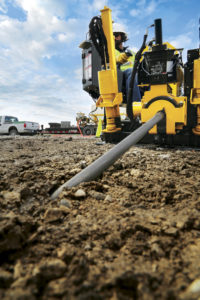 PELLA, Iowa, February 28, 2017 – Vermeer has bolstered its industry-leading line of HDD tooling and accessories with the addition of the Silver Series drill rod. Building on the tradition of the acclaimed Firestick® drill rod, Silver Series drill rod gives contractors a quality aftermarket drill rod at an economic price.
PELLA, Iowa, February 28, 2017 – Vermeer has bolstered its industry-leading line of HDD tooling and accessories with the addition of the Silver Series drill rod. Building on the tradition of the acclaimed Firestick® drill rod, Silver Series drill rod gives contractors a quality aftermarket drill rod at an economic price.
“There are many similarities between Firestick drill rod and Silver Series drill rod, including the threading and column wall thickness, but there are differences that help us keep a lower price,” said Dave Van Wyk, senior director of Lifecycle at Vermeer. “Firestick drill rod is the industry gold standard, as it offers unmatched quality and steering performance meant for the biggest and toughest jobs. Silver Series drill rod is a close second in terms of performance, giving operators a solid, cost-effective option.”
Like other lower tier options on the market, Silver Series drill rod is composed of S135 common grade steel. But unlike others, it is threaded in the same state-of-the-art facility and subject to the same rigorous quality inspection process as Firestick drill rod.
In addition, Firestick drill rod and Silver Series drill rod have the same column wall thickness, which is thinner than some competitive drill rod options. Van Wyk said this is why Vermeer drill rod provides superior longevity and steering performance.
“Thicker column walls, while cheaper to manufacture, require more force to steer. That can put unbalanced stress on the connections and lead to premature thread wear and even joint failure,” said Van Wyk. “The Silver Series drill rod has the same wall thickness-to-connection strength ratio proven on Firestick drill rod.”
Silver Series drill rod is now available in four sizes: 1.66″ (4.2 cm), 1.9″ (4.8 cm), 2.06″ (5.2 cm), and 2.375″ (6 cm) for use on the D7x11 through the D24x40 S3 Navigator® HDD models, including all current and legacy models in between.
ABOUT VERMEER
Vermeer Corporation delivers a real impact in a progressing world through the manufacture of high-quality underground construction, surface mining, tree care, environmental and agricultural equipment. With a reputation for durability and reliability, that equipment is backed by localized customer service and support provided by independent dealers around the world. To learn more about Vermeer Corporation, products, the dealer network and financing options, visit vermeer.com,
Blog, Industry News, trenchless people, trenchless products
Congratulations to Benjamin Media on 25 years serving the trenchless and construction industry!
BMI currently publishes eight trade magazines: Compact Equipment, NASTT’s Trenchless Today, North American Oil and Gas Pipelines, Solar Builder, TBM: Tunnel Business Magazine, Trenchless Technology, Water Finance & Management and Utility Contractor. BMI is committed to online and interactive media by enhancing its print media with innovative and informative online content and mobile apps. In addition, BMI manages conferences and exhibitions across the United States — from the Trenchless Road Shows to NASTT’s No-Dig — and complements these shows with online webinar programs.
Blog, Industry News, trenchless products
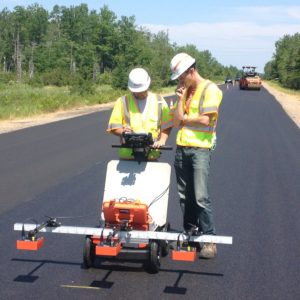 GSSI, the world’s leading manufacturer of ground penetrating radar (GPR) equipment, will be showcasing its latest GPR technology at CONEXPO-CON/AGG 2017, to be held March 7-11, 2017, at the Las Vegas Convention Center in Las Vegas, Nevada, Booth # S-62452. Technology to be featured includes the PaveScan® RDM asphalt density assessment tool, StructureScan™ Mini XT, and the UtilityScan® Pro utility detection tool.
GSSI, the world’s leading manufacturer of ground penetrating radar (GPR) equipment, will be showcasing its latest GPR technology at CONEXPO-CON/AGG 2017, to be held March 7-11, 2017, at the Las Vegas Convention Center in Las Vegas, Nevada, Booth # S-62452. Technology to be featured includes the PaveScan® RDM asphalt density assessment tool, StructureScan™ Mini XT, and the UtilityScan® Pro utility detection tool.
The PaveScan RDM on display is an easy and affordable asphalt density assessment tool, ideal for uncovering problems that occur during the paving process, including poor uniformity and significant variations in density. PaveScan RDM helps avoid such premature failures as road raveling, cracking, and deterioration along joints. Seamlessly integrating with GPS systems, PaveScan RDM features a flexible, modular design that facilitates easy and efficient operation and data collection. It is available as a small, portable single sensor cart-based system or a three-sensor configuration using an extended cart or vehicle configuration. The system includes a cart, one to three sensors, a customized Panasonic ToughBook, Garmin Glo GPS, a concentrator box, and a variety of system accessories.
Also on display is the StructureScan Mini XT – the newest generation of GSSI’s popular all-in-one concrete inspection GPR system. Rugged, compact, and flexible, StructureScan Mini XT is a good choice for locating rebar, conduits, post-tension cables, and voids. The Mini XT can help identify structural elements, including pan deck and concrete cover, and can also provide real time determination of concrete slab thickness. The integrated concrete inspection tool comes with an antenna, positioning system, and control unit combination. Also on display with the StructureScan Mini XT is the new LineTrac™ XT accessory, which helps locate specific power sources in concrete, including AC power present in conduits.
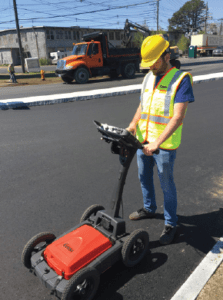 Drop by the booth to see the UtilityScan Pro, the latest addition to the company’s popular UtilityScan GPR product line. UtilityScan systems are the industry standard for efficiently identifying and marking the location and depth of subsurface utilities, including gas, sewer, and communication lines. Featuring the SIR 4000 control unit, the UtilityScan Pro delivers the configurability and flexibility to address a wide range of utility applications. This advanced GPR system is ideal for locating gas, communications, sewer lines, and other metallic and nonmetallic targets, including underground storage tanks and PVC pipes.
Drop by the booth to see the UtilityScan Pro, the latest addition to the company’s popular UtilityScan GPR product line. UtilityScan systems are the industry standard for efficiently identifying and marking the location and depth of subsurface utilities, including gas, sewer, and communication lines. Featuring the SIR 4000 control unit, the UtilityScan Pro delivers the configurability and flexibility to address a wide range of utility applications. This advanced GPR system is ideal for locating gas, communications, sewer lines, and other metallic and nonmetallic targets, including underground storage tanks and PVC pipes.
About GSSI
Geophysical Survey Systems, Inc. is the world leader in the development, manufacture, and sale of ground penetrating radar (GPR) equipment, primarily for the concrete inspection, utility mapping and locating, road and bridge deck evaluation, geophysics, and archaeology markets. Our equipment is used all over the world to explore the subsurface of the earth and to inspect infrastructure systems non-destructively. GSSI created the first commercial GPR system nearly 45 years ago and continues to provide the widest range and highest quality GPR equipment available today.
 Hutchinson, Kansas – StraightLine HDD, Inc. announced the acquisition of Texas-based Armadrillco, Inc. The strategic acquisition of complementary products expands the portfolio of high-flow/side-load transmitter housings and rock tools targeting hard formation pilot drilling. The combination also solidifies StraightLine’s strategic position within key HDD markets. The change in ownership was completed in February.
Hutchinson, Kansas – StraightLine HDD, Inc. announced the acquisition of Texas-based Armadrillco, Inc. The strategic acquisition of complementary products expands the portfolio of high-flow/side-load transmitter housings and rock tools targeting hard formation pilot drilling. The combination also solidifies StraightLine’s strategic position within key HDD markets. The change in ownership was completed in February.




